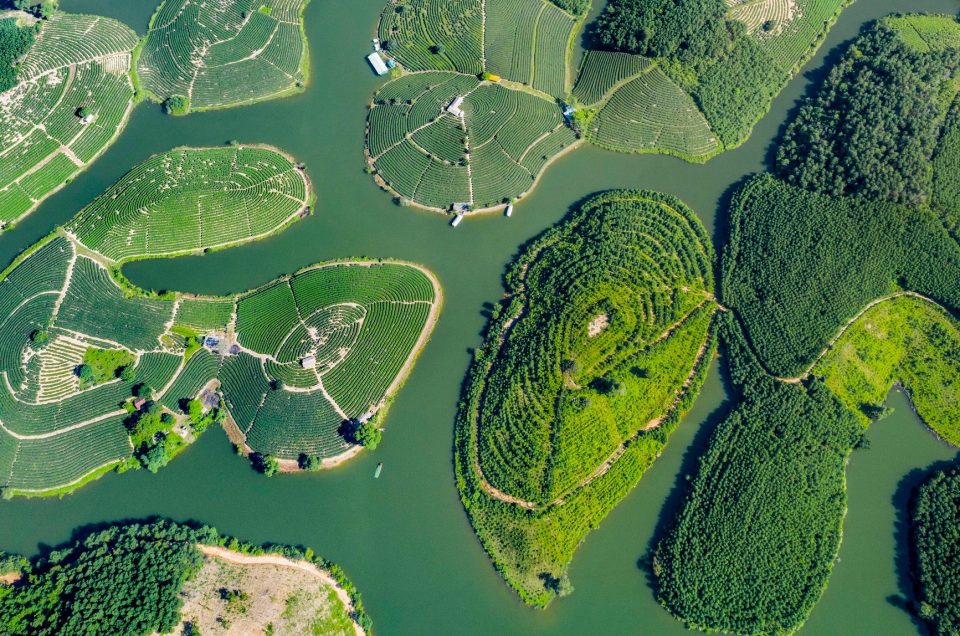Emerald heaven
Tourists accustomed to seeing endlessly rolling tea hills in the Northern Midlands, such as Long Coc (Phu Tho) and Tan Cuong (Thai Nguyen), or in the Highlands, such as Bao Loc (Lam Dong) and Moc Chau (Son La), will be astounded by the “tea oases” in Thanh Chuong District, Nghe An Province. Many weary travelers have found respite from the Central Region’s heat and wind in these in these picturesque tea hills.

As the Ho Chi Minh Trail passes through Thanh An Commune, Thanh Chuong District in Nghe An, visitors can find the Cau Cau Tea Fields by looking for a signpost and turning after about 200 meters. The tea fields rise from the dam system of Cau Cau Lake, after which the tea fields are named. Starting in late 1960s, people in Thanh An and nearby communes began to build dams and store water from ravines to use for agriculture. As the water level rose, many hills morphed into islands. Following the implementation of an agricultural development policy and plans to make tea the main local crop, many households became involved in the tea industry. Thanh An residents have worked hard to cultivate these tea plants, which are now lush.

Covering once-barren hills, the tea fields have earned the area the nickname of “a tea oasis”. Some 50 tea fields dot and surround the lake, with the entire area covering around 83 hectares.
Perennial tea bushes are planted in regular beds and pruned to maintain optimal body height, resulting in verdant leaves that reflect on the water’s gleaming surface. The most striking time to visit is at sunrise, when dew coats the leaves, and the serene setting becomes even more romantic with the delicate aroma of tea in the air. The name “Thanh Chuong Tea Hills” has appeared on the tourist map of Nghe An, and the area and its scenery are becoming better-known.

In recent years, growing numbers of visitors to Nghe An are adding Thanh Chuong to their itinerary, along with stops on Cua Lo Beach, Quynh Bang Beach, and historic sites. Because the weather is mild in winter and summer, “tea oasis tourism” can take place in all four seasons.






